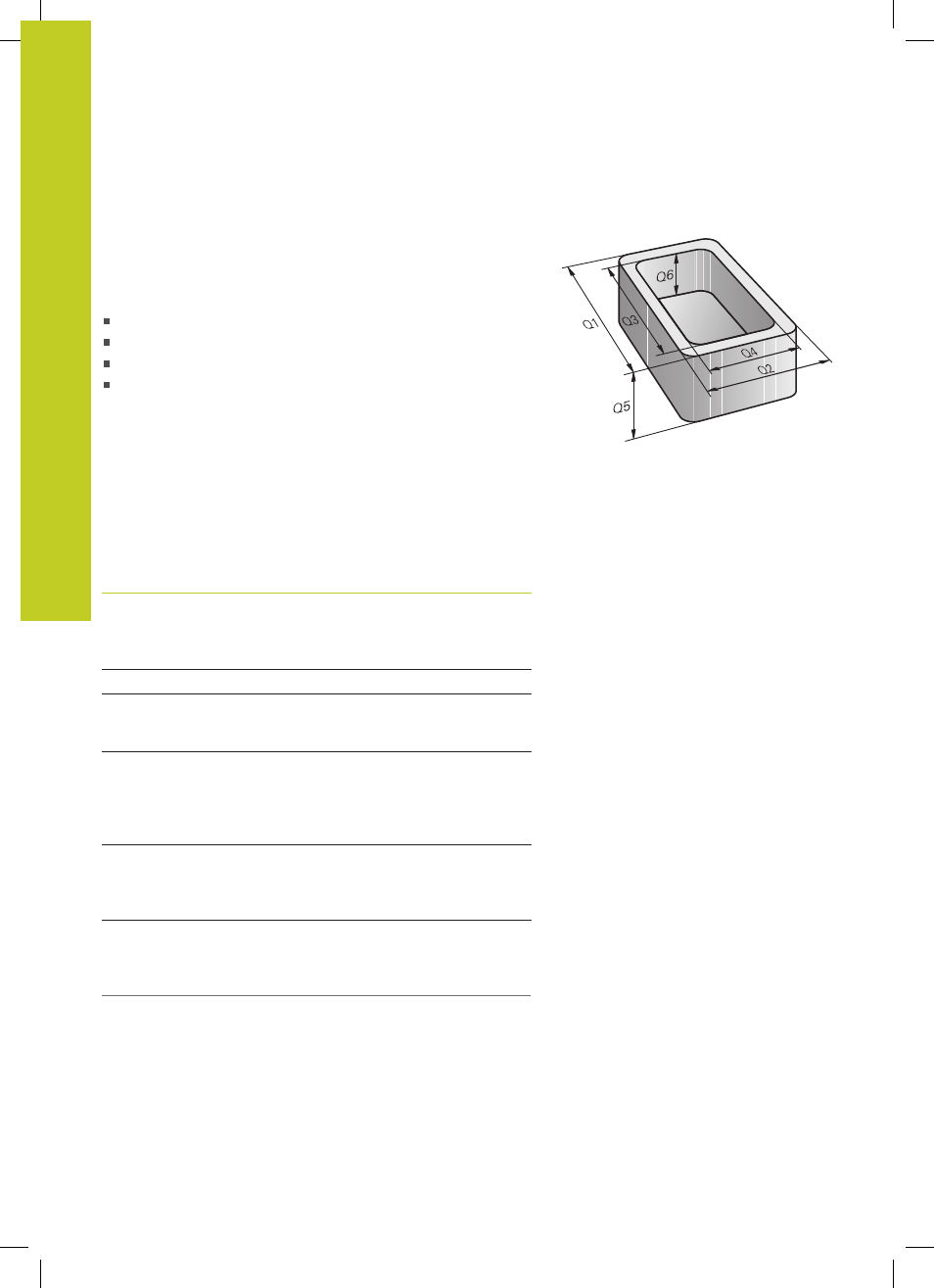1 principle and overview of functions, Principle and overview of functions – HEIDENHAIN TNC 620 (73498x-02) User Manual
Page 266

Programming: Q Parameters
9.1
Principle and overview of functions
9
266
TNC 620 | User's Manual
HEIDENHAIN Conversational Programming | 5/2013
9.1
Principle and overview of functions
You can program entire families of parts in a single part program.
You do this by entering variables called Q parameters instead of
fixed numerical values.
Q parameters can represent information such as:
Coordinate values
Feed rates
Spindle speeds
Cycle data
Q parameters also enable you to program contours that are defined
with mathematical functions. You can also use Q parameters
to make the execution of machining steps depend on logical
conditions. In conjunction with FK programming you can also
combine contours that do not have NC-compatible dimensions with
Q parameters.
Q parameters are designated by letters and a number between
0 and 1999. Parameters that take effect in different manners are
available. Please refer to the following table:
Meaning
Range
Freely applicable parameters, as long as
no overlapping with SL cycles can occur.
They are globally effective for all programs
stored in the TNC memory.
Q0 to Q99
Parameters for special TNC functions
Q100 to Q199
Parameters that are primarily used for
cycles, globally effective for all programs
stored in the TNC memory
Q200 to Q1199
Parameters that are primarily used for
OEM cycles, and are globally effective for
all programs stored in the TNC memory.
This may require coordination with the
machine manufacturer or supplier
Q1200 to Q1399
Parameters that are primarily used for
call-active
OEM cycles, globally effective
for all programs that are stored in the TNC
memory
Q1400 to Q1499
Parameters that are primarily used for
Def-active
OEM cycles, globally effective
for all programs that are stored in the TNC
memory
Q1500 to Q1599